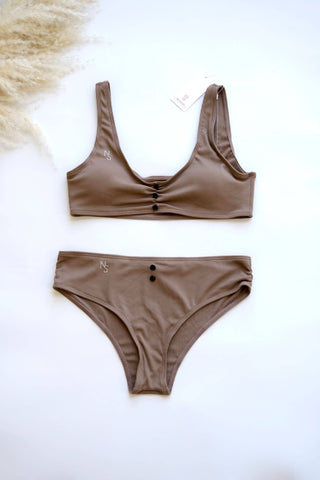Baby & Toddler sleep training tips



Baby & Toddler sleep training tips
This blog is guaranteed to help anyone who is struggling with their child’s sleep. Today I sat down with Anneka from The Sleep Société (I will include tags at the end of the blog) sleep cycles, schedules, laying healthy sleep foundations and so much more.
 So a little bit about Anneka, she is Qatar based for almost 10 years and originally from Ireland. A former Marketing professional turned full time Mum, after welcoming her first daughter almost 4 years ago Anneka witnessed first-hand the lack of support and information that existed when it came to child sleep.
So a little bit about Anneka, she is Qatar based for almost 10 years and originally from Ireland. A former Marketing professional turned full time Mum, after welcoming her first daughter almost 4 years ago Anneka witnessed first-hand the lack of support and information that existed when it came to child sleep.
“Before becoming parents, we prepare ourselves as best we possibly can by learning all there is to know about having a healthy pregnancy, a positive labour and delivery and the ins and outs of new born care. We research the best hospitals, OBGYN’s, we hire Lactation Consultants and Doula’s, and buy all the baby paraphernalia we could possibly ever need. We literally leave no stone unturned when it comes to preparing for our little one’s arrival. But unfortunately, when it comes to sleep, something that is so critical to our health and overall wellbeing, this part is so often overlooked.”
Quality of sleep V quantity of sleep
Quantity of sleep is very easy to measure, there is a certain amount of day time sleep and night time sleep that a child should be having which is dependent on their age. (see chart) this is expected; each child will be a little different. Anneka explains in terms of quality should be consistent unbroken sleep. If a child is waking 10 times over a 12-hour period is quantity, on paper a good sleep, but the quality is poor. Quality and quantity are just as important for the child and parent so they get the proper rest.
It’s important to know what your child is sleeping, Anneka explains that every child will be different but there are ranges to be followed, it’s good to start by mapping out a schedule so the child has the correct wake windows, to create balance between night time sleep and day time naps, when they are waking and when they are going down for their next nap. The idea is to plug the sleep in throughout the day so the child doesn’t get over tired at any one-point ad so that they are not having too much daytime sleep so that they are tired enough to sleep at night.
Anneka stresses that quality and quantity of sleep are equally as important when it comes to a child’s overall health and wellbeing. She reiterates that while every child is unique, there are ranges that can be applied for certain age brackets (detailed above), and utilising this to map out a target schedule for your little one’s day and night time sleep is a great place to start.

Sleep cycles explained
 Anneka explains it’s really important to understand the science behind sleep in order to understand what you are trying to achieve. If a child has assistance at stage 1 of the sleep cycle for example rocking, pushed in the pram, driven in the car etc, then when they come out of the cycle at stage 5 most likely they will wake up and look for the same assistance as they had at the beginning.
Anneka explains it’s really important to understand the science behind sleep in order to understand what you are trying to achieve. If a child has assistance at stage 1 of the sleep cycle for example rocking, pushed in the pram, driven in the car etc, then when they come out of the cycle at stage 5 most likely they will wake up and look for the same assistance as they had at the beginning.
Annekas goal for sleep training is to strip away any sleep crutches and props and to teach the child the skills to be able to put themselves to sleep. She explains once this is achieved once they come out of the cycle at stage 5 they are capable of putting themselves back to sleep again seamlessly.
Daytime naps should be roughly 2 sleep cycles and at night it’s a lot more complete cycles to get good quantity and quality of sleep. Catnaps will be roughly 1 sleep cycle.
Breast Versus Formula Fed Babies + Sleep
Anneka highlights that there is a common misconception which formula fed babies sleep better than breast fed babies, because breast milk is lighter, it’s easier to digest, it’s not measured so babies stay on the breast a lot longer, but Anneka explains that the reality is there is no research to suggest that this is the case. From a sleep point of view she explains that it doesn’t matter whether the baby is breast or formula, she explains that it doesn’t affect sleep, weaning them onto bottles will not equate to better sleep.
The key point is to dissociate the feeding and sleep, so for example a breast fed baby is happy and cosy on the boob and so it’s quite difficult for them to stay awake. However, you don’t want the fed associated with sleep and the best way to do this is to place the feed at a different time in the routine, for example maybe feed, bath and then bed so this is not an aid for the baby to fall asleep and they go into the cot awake.
A key point is while the child is feeding you don’t want them to fall asleep, even if you wake them after, they have had a little bit ad it can take the edge of the sleep pressure, which is needed to have sleep drive.
Most common questions asked, other than how can I get my child to sleep
 There is a process that everyone needs to go through in order to help their child. If a child isn’t sleeping well, Anneka says you have to understand where the problem lies because all children are different and everyone will use a different technique to get their child to sleep, but the first thing she asks the parents to do is to look at how the child is falling asleep at the beginning of the night, if there is assistant that is one of the issues, she explains to look at the sleep schedule, are they getting enough daytime sleep, or too much daytime sleep, do you have a solid routine where they can know what to expect during the day.
There is a process that everyone needs to go through in order to help their child. If a child isn’t sleeping well, Anneka says you have to understand where the problem lies because all children are different and everyone will use a different technique to get their child to sleep, but the first thing she asks the parents to do is to look at how the child is falling asleep at the beginning of the night, if there is assistant that is one of the issues, she explains to look at the sleep schedule, are they getting enough daytime sleep, or too much daytime sleep, do you have a solid routine where they can know what to expect during the day.
Another part is to manage your own expectations, she refers back to the chart to plan their schedule accordingly, creating a plan with achievements is key, look at your bedtime routine, morning routine, nap routines, the day as a whole, she says a lot of the time there isn’t a solid plan in place.
If you are rocking your baby to sleep, or aiding in some way Anneka explains that this is fixable through the sleep training. She explains there are 2 styles to do this one being parental fading whereby you would start in the room with the child then over the course of the week or two you would fade out, so to start with you are very present to begin with then slowly fade yourself away. The other style is progressive waiting, whereby you leave the room and go back in to check at timed intervals. There’s no correct style it is completely up to the parents. The progress should be reviewed, stick with it long enough to see the results, it needs consistency in order to work.
Sleep training should only be started from 4 months plus, before then the baby isn’t developmentally capable of self-soothing and self-settling, however just because biologically the baby is ready it doesn’t mean the family is, it whatever works for each family.
Self-soothing
 Is it good to just leave a baby in the cot cry alone and they will self sooth? Anneka explained as a mother herself she could not imagine leaving her babies in the cot and then close the door, she explains it is a method that exists and may even work for some families, however within the sleep societe her aim is to set long lasting goals, leaving a child crying is something that may only be a short term fix. The sleep societe will help recommend the bestmethod for you and help with this schedule.
Is it good to just leave a baby in the cot cry alone and they will self sooth? Anneka explained as a mother herself she could not imagine leaving her babies in the cot and then close the door, she explains it is a method that exists and may even work for some families, however within the sleep societe her aim is to set long lasting goals, leaving a child crying is something that may only be a short term fix. The sleep societe will help recommend the bestmethod for you and help with this schedule.We asked for 5 but she gave us 10 myths for sleep training

- Breast fed babies wont sleep as well as bottle fed babies
- My baby is waking due to hunger at night, sometimes can be true especially if they are younger than 4 months, but from 6-8 months they tend to stop night feeds. If they are older than 8 months, the changes are they are feeding due to habit rather than hunger.
- Keeping your baby up later at night will help they lay in and get up later in the morning, the child will get into an over tired cycle and will rise even earlier, the best solution is an age appropriate bed time.
- Limiting day time sleep will help the baby sleep better at night, which again will feed into an overtired cycle. If a baby is too tired at bedtime they will struggle to get to sleep ad you will notice a lot of movement in the night.
- Never wake a sleeping baby, this couldn’t be further from the truth, there are times when you want to wake the baby for example the morning, to get into the sleep training routine and also with naps, once a baby is into their routine they may start to love naps and will continue to nap, this is where they would need to be woke up so you preserve their next nap and keep consistency.
- My baby or my toddler will just sleep better eventually, sometimes it will however based on the amount of older children Anneka sees a lot of the time this isn’t the case.it does the parents a disservice by expecting them to ride it out and sleep when they are in college.
- My baby is teething, babies will teeth from 6 months to 1 year so there’s never really a time when there is nothing going on in the baby’s life where they are not at risk of teething or something, unless they are really having a hard time, sore gums, red bums and fever. The tough bit would last a few days only, where this should be put off.
- Babies should sleep in silence, white noise actually helps the baby to sleep, it’s reassuring for younger babies as its reminiscent of being in the womb and also helpful if your living in an area or household they can help to dampen external sounds that could disturb the baby.
- My baby is just a bad sleeper, we have tried everything they are a lost cause, low sleep needs. Most children will need the right amount of sleep per day but because they are in the over tired cycle they look like they don’t need sleep, the parents may be trying everything but the key is not for long enough so the child doesn’t get into the routine enough. A good time period for each technique is at least 2 weeks.
- Sleep training will damage my child, research states that this is not true. For some families it’s not for them which is ok, some it works perfectly.
 Anneka talked about the some of the negativity around sleep training, if you’re in a position where your child isn’t sleeping and you want things to improve you need to take a look and see if you are ready as a family to do this. If you’re not ready she explains to ask yourself why, what’s the reason? Are you nervous, is it because of the misinformation that is out there, or things you may have seen online, the tears? Try to find someone that can help you either confirm your fears or alleviate them, its important that when you sleep train you’d feel comfortable as if you’re not comfortable you won’t see it through, which isn’t fair on you or the child.
Anneka talked about the some of the negativity around sleep training, if you’re in a position where your child isn’t sleeping and you want things to improve you need to take a look and see if you are ready as a family to do this. If you’re not ready she explains to ask yourself why, what’s the reason? Are you nervous, is it because of the misinformation that is out there, or things you may have seen online, the tears? Try to find someone that can help you either confirm your fears or alleviate them, its important that when you sleep train you’d feel comfortable as if you’re not comfortable you won’t see it through, which isn’t fair on you or the child.
Advice for Napping at Nursery
Lastly we touched on naps in crèche/nursery, if the baby or child isn’t in your care how do you try and keep up the sleep training? The first question is to ask when the child first attended crèche/nursery, were they sleeping find at home first? Or is the sleep training a new thing?
Speak to the nursery/crèche and see what time the naps are (some nurseries will be more forthcoming than others) but see if the naps are when the child needs and try to get the nursery to get the naps as close as possible, if the child isn’t tired enough for the nap or is over tired by the time the nap comes around they will struggle to get that nap in. Another way is to bring a comfort item at home, or a sleep bag the child will associate this will sleep. Also enquire what method they are using to get the child to sleep, what’s the environment like, is the room dark? Do they use white noise? If not, why not, some crèches will work really well to help. Beyond that make sure the naps at home and on the weekends are to schedule and focus on these. Consistency is key.

A massive thankyou to Anneka, I’m sure this blog has definitely helped so many parents. The sleep societe contact info are as follows:
Website: www.thesleepsociete.com
Email: anneka@thesleepsociete.com
IG account: www.instagram.com/thesleepsociete









